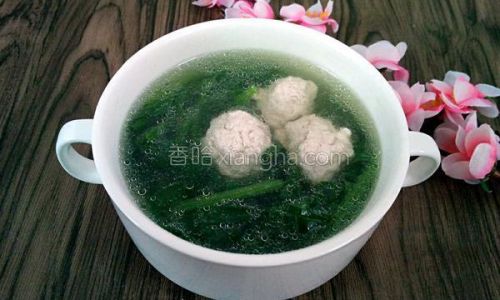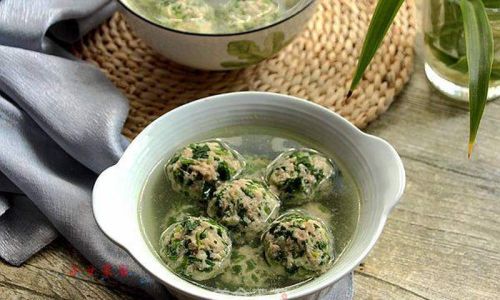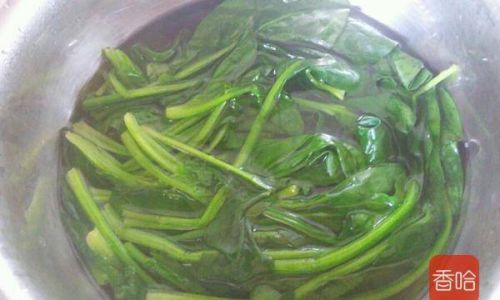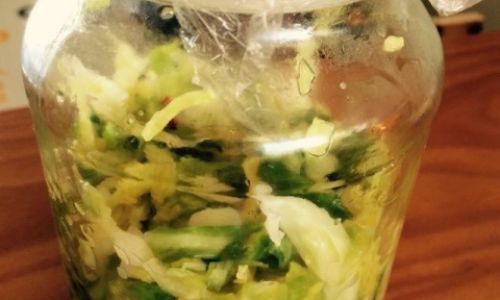Table of content
Spinach meatballs, a delightful fusion of earthy greens and savory protein, offer a versatile dish that can elevate any meal. Whether served as an appetizer, a main course, or nestled in a hearty sandwich, these meatballs balance nutrition and flavor perfectly. This guide will walk you through every step of creating spinach meatballs that are tender, juicy, and bursting with taste. From selecting the finest ingredients to mastering cooking techniques, we’ll explore how to achieve restaurant-quality results in your kitchen.

The Foundation: Ingredients and Their Roles
To create spinach meatballs that stand out, start with quality ingredients. Each component plays a pivotal role in texture, moisture, and flavor:
- Spinach: Fresh or frozen? Both work, but fresh spinach offers a vibrant color and crisper texture. If using frozen, thaw and drain excess liquid to prevent sogginess.
- Ground Meat: Opt for a blend of beef, pork, or turkey. Leaner meats like chicken or turkey may require added fat (e.g., olive oil) to prevent dryness.
- Binders: Breadcrumbs (panko or traditional) and eggs are essential for cohesion. For gluten-free options, use almond flour or cooked rice.
- Aromatics: Onion, garlic, and herbs like parsley or basil infuse the meatballs with aromatic depth.
- Seasonings: Salt, pepper, red pepper flakes, and spices like cumin or smoked paprika add complexity.
- Dairy (Optional): Grated Parmesan or ricotta can enhance richness and moisture.
Step-by-Step Preparation: From Spinach to Savory Spheres
Preparing the Spinach
- Fresh Spinach: Wash thoroughly to remove grit. Blanch in boiling water for 1 minute, then transfer to an ice bath to halt cooking. Squeeze out excess moisture using a cheesecloth or kitchen towel.
- Frozen Spinach: Thaw completely, then drain in a sieve. Press firmly to eliminate liquid—excess moisture will make meatballs fall apart.
Sautéing Aromatics
In a skillet, sauté finely chopped onion and garlic in olive oil until translucent. This step mellows their raw edge and caramelizes their sugars, adding sweetness to the meatballs. Let cool before mixing with meat to prevent cooking the proteins prematurely.

Combining Ingredients
In a large bowl, gently combine the ground meat, spinach, sautéed aromatics, breadcrumbs, eggs, and seasonings. Avoid overmixing, as this can result in dense meatballs. Use your hands to blend until just incorporated—the mixture should hold together without feeling sticky.
Shaping the Meatballs
Scoop portions using a cookie dough scoop or tablespoon for uniformity. Lightly oil your hands to prevent sticking, then roll each portion into a smooth ball. Aim for a diameter of 1.5–2 inches to ensure even cooking.

Cooking Methods: Perfecting Texture and Flavor
Option 1: Pan-Frying
- Pros: Crispy exterior, quick cooking.
- Technique: Heat 2–3 tablespoons of olive oil in a skillet over medium heat. Fry meatballs in batches, turning to brown all sides (6–8 minutes total). Finish in a 350°F (175°C) oven for 10 minutes to ensure they’re cooked through.
Option 2: Baking
- Pros: Hands-off, healthier, even cooking.
- Technique: Preheat the oven to 400°F (200°C). Place meatballs on a parchment-lined baking sheet, spaced 1 inch apart. Bake for 18–22 minutes, flipping halfway for uniform browning.
Option 3: Simmering in Sauce
- Pros: Infuses meatballs with sauce flavor.
- Technique: Brown meatballs in a skillet, then transfer to a simmering tomato or creamy sauce. Cover and cook on low heat for 20–25 minutes.
Pro Tips for Perfect Spinach Meatballs
- Chill the Mixture: Refrigerate the uncooked meatballs for 30 minutes to firm up, preventing them from losing shape during cooking.
- Test the Seasoning: Fry a small patty of the mixture to taste-test. Adjust salt, pepper, or herbs as needed before shaping all the meatballs.
- Balance Moisture: If the mixture feels too wet, add extra breadcrumbs. If too dry, incorporate a splash of milk or broth.
- Use a Thermometer: For ground poultry, ensure an internal temperature of 165°F (74°C). For beef or pork, 160°F (71°C).
Serving Suggestions: Beyond the Basic Plate
- Pasta Pairing: Toss meatballs with spaghetti, marinara, and fresh basil. Top with grated Parmesan.
- Appetizer Platter: Skewer meatballs with cherry tomatoes and mozzarella, drizzled with balsamic glaze.
- Soup Addition: Drop uncooked meatballs into simmering broth for a hearty minestrone or wedding soup.
- Sandwich Sensation: Layer meatballs on a toasted roll with provolone and roasted red peppers.
Creative Variations to Experiment With
- Vegetarian Twist: Substitute meat with lentils or chickpeas. Add walnuts for texture.
- Spicy Kick: Incorporate minced jalapeños or a dash of sriracha into the mixture.
- Cheese-Stuffed Surprise: Hide a cube of mozzarella or feta inside each meatball for a melty center.
- Herb-Infused: Mix in chopped dill, mint, or cilantro for a Mediterranean flair.
Health Benefits: Nutrition Meets Comfort Food
Spinach meatballs are a nutritional powerhouse:
- Spinach: Rich in iron, vitamins A and K, and antioxidants.
- Lean Protein: Supports muscle health and satiety.
- Low-Carb Option: Use almond flour instead of breadcrumbs for keto-friendly meatballs.
- Baked vs. Fried: Baking reduces calorie content while preserving moisture.
Troubleshooting Common Issues
-
Meatballs Falling Apart:

- Cause: Too much liquid from spinach or insufficient binders.
- Fix: Increase breadcrumbs by 1–2 tablespoons and ensure spinach is thoroughly drained.
-
Dry Texture:
- Cause: Overcooking or lean meat without added fat.
- Fix: Use a meat thermometer to prevent overcooking. Mix in 1–2 tablespoons of olive oil or ricotta.
-
Bland Flavor:

- Cause: Under-seasoning or lack of aromatics.
- Fix: Double the garlic, herbs, and spices. Marinate meatballs in sauce post-cooking.
Storing and Reheating Leftovers
- Refrigerator: Store cooked meatballs in an airtight container for up to 4 days.
- Freezer: Arrange uncooked meatballs on a baking sheet, freeze until solid, then transfer to a freezer bag. Thaw overnight before cooking.
- Reheating: Gently warm in a sauce, oven, or microwave. Avoid overheating to prevent dryness.
Conclusion: Elevate Your Culinary Repertoire
Spinach meatballs are more than a meal—they’re a canvas for creativity. By mastering the balance of ingredients, textures, and cooking techniques, you can transform simple components into a dish that delights the senses. Whether you’re catering to dietary preferences, experimenting with flavors, or seeking a comforting family dinner, these meatballs are a testament to the magic of combining greens and protein. So, roll up your sleeves, embrace the process, and savor the satisfaction of a perfectly crafted bite. Your kitchen adventures await—happy cooking!




0 comments